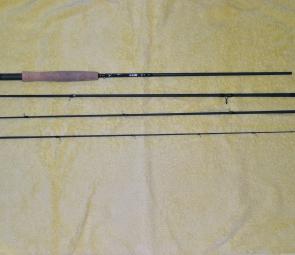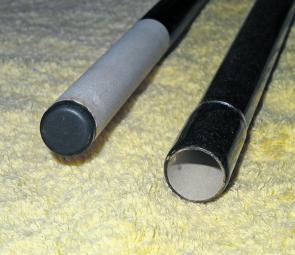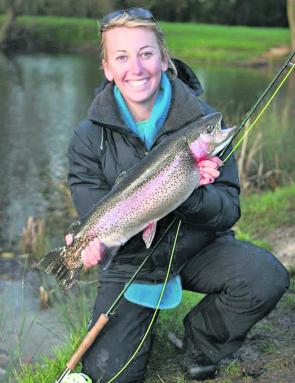The factors influencing a person’s choice between either a one-piece fishing rod or a two-piece fishing rod should get more discussion time than they do.
Early in my fishing career, as a kid in the 80s, all the rods that I used were one-piece. Accordingly, every time I used a two-piece rod I marvelled at their design and function. Some of those rods were horrors; the good ones were added to my collection.
I’m sure that I won’t cover every rod available, however, my intent here is to mention the factors to consider when choosing whether you poke a one-piece rod out of the window on the drive home from the tackle shop, or if you stash a multi-piece rod in its tube into the boot.
If the introduction to this article makes you think that I’m a bit partial to multi-piece rods then you’d be correct. However, having travelled the world as a professional recreational angler who fished many different styles and techniques, I probably own 400 or so rods, yet only about 40 of them would be two-piece (and three or four piece).
Quite simply many rods are only available in a one-piece configuration. Multi-piece rods are available because they are easier to store and cart around.
The joins, or ferrules, in a multi-piece rod need to be carefully designed and tested to ensure that they aren’t weak points where the rod will break – some ferrules are so well designed that the areas around the join are stronger than the rest of the rod.
As I mentioned earlier, it is not the aim of this article to compare the various types on modern ferrules. However I will comment that this century’s glass-to-glass ferrules are far superior to the metal ferrules of my parent’s youth.
Old timers would say that you may as well as buy a one-piece rod because when your two-piece rod’s metal ferrule corroded together then you’d end up with a one-piece rod anyway. Back in those days the common types of ferrules created a flat-spot in a rod’s power curve and detracted from the feel of the rod in your hand. Today the modern ferrules assemble and disassemble easily and in many cases you’ll never know that they are there.
Back in the old days, when custom rods were more common, mainly because variety wasn’t available off the shelf, it was often the backyard rod builder that cut and installed the ferrule in the rod blank before gluing on the butt components and binding on the guides and tip eyelet. Accordingly you could choose to either ferrule the rod in the middle or at the butt. These days it is more likely that the blank that you choose will come out of the factory already ferruled.
Most factory ferrule and multi-piece rod development probably came about via the fly rod market. In fact many before the fly rod refinements were incorporated into spin rods; spin rod anglers would build their spin rods on fly rod blanks just to use the refined joins available from fly rods.
Those early factory two-piece rods were nearly always ferruled at the halfway point. These days though, many high performance rods will have the ferrule closer to the butt. The butt is a stronger section of the rod blank so it stands to reason that this stronger region is the ideal place to design and incorporate a more durable join.
Rods like modern surf rods and fly rods are most often joined in the middle. Whereas offshore boat rods (bottom bashers, stand-up bent butt game rods, and some jig sticks) and longer lure casting rods (popper, spin rods and baitcaster flipping sticks) are some of the more common styles of multi-piece rod.
With the recent increase in enforcement of unsecured loads, many anglers now prefer to store their rods in the car instead of loose in the boat on the drive to the boat ramp. There are other considerations as well:
Back in the days of yore’, every house had a row (or rows) of pegs along the garage siding on which the families beach/surf rods were ‘hung’ along the wall. My beach rods are now two-piece and these rods are stored vertically rather than horizontally.
To transport these rods they’ll go on the roof, often in a large PVC tube affixed to the side of the roof rack on the 4WD wagon, or inside the vehicle either in a rod bag or a rod bag inside a tube. It’s a sign of the times that people today prefer to store their rods as two-piece affairs out of sight and out of mind of idle hands.
One-piece surf rods require rod holders on your bull bar (and some people go so far as to avoid bolting these on today until they hit the beach). Alternatively you can ungainly strap the rods to the roof with the tips drawn down and bent across/over the hot engine bay – a move that is not recommended by the rod manufacturers.
These days, the world of inexpensive airline flights means that anglers are more likely to fly in for a fishing holiday. However, airlines are not kind to anglers and many now have length restrictions on your baggage, which you’ll have to pay sometimes exorbitant surcharges.
These days carriers may advise that passenger’s checked baggage dimensions do not exceed somewhere between 140cm and 158cm (height + width + length). That means that if the staff at the counter interpret it so, then you may be restricted to a rod tube of a maximum length of, for example, 135cm/4’6”. Over the years I’ve seen many interpretations of this rule and I have even had to pay extra for the rod tube because it was considered my second bag.
To avoid the hassle, many traveling anglers will carry four-piece fly rods (each piece being under 75cm long) in a rod tube that is inside their main travel duffle. I have a G.Loomis roller duffle that has the rod tubes built in.
Multi-piece rods tend to be used with reels that are fished under the rod, such as fly reels, spin reels and beach reels. The torsional effects of guides-above-the-rod can cause the individual pieces to twist if the joints aren’t 100% secure.
Overhead reels are often used on multi-piece rods that have their single join close to or at the butt.
A three-piece fly rod with 95cm pieces will/may need to be housed in a separate bag (at extra cost) because they often won’t fit in all but the largest of roller-duffles. Accordingly, if you wish to save money and hassle when heading to New Zealand for that week of fly fishing then consider a 4-piece fly rod.
As mentioned earlier, two-piece beach rods will give you many more storage options, and any perceived loss in performance is really negligible (top flight casting rods are often multi-piece these days).
There are probably two types of beach fishing scenarios in South East Queensland. One is based around the mainlaind beaches that you cannot 4WD on; and the other is the island beaches of Moreton, Fraser, Bribie and Stradbroke as well as North Shore and Rainbow Beach where you can 4WD. How your car/4WD is setup may be the biggest influence as to which rod style and length suits you best. For example, when accessing the mainland beaches using a small 2WD that is parked in the car park – you seldom have a bull bar or roof rack from which to carry your rods – hence a two piece surf rod is likely to be your best bet.
Up until the 1990s, there was a length and horsepower limit on boats fishing international bass tournaments – accordingly rods had to fit inside the rod lockers on these high-speed boats. This influenced fishing rods across the entire planet.
The baitcaster rods that were developed to address the rod-locker length criteria had friction fit single-slide telescopic butts and were called flipping sticks. Because the ‘join’ was close to the butt these rods worked very well, and even though the boats and their lockers are now bigger, many flipping and pitching sticks are still designed in the traditional sense.
These rods are very suitable for the smaller fleet of estuary/creek lure casting boats that we use in Australia.
Game and blue water tackle often use detachable butts, often made from alloy, because these butts have to be incredibly strong.
Lure and live bait casting rods can be very long (popper rods and ‘fly-lining’ rods) and the ability to shorten them by removing the butt section for storage and transport can be very handy.
A backpacker’s rod is normally multi-piece so that it can fit alongside your backpack and doesn’t stick up too far so as to poke into branches and shrubbery as you walk the track to the fishing spot.
If you size your rods to suit your boat, and if that’s the platform and scenario where you conduct most of your recreational angling, then you may never see the need for a multi-piece rod and a one-piece stick will be the best for you.
However if you like to travel, then multi-piece rods will make life flow a whole lot smoother.
There will always be the claim that one-piece rods are more sensitive, however for 99% of anglers, multi-piece rods are far more practical – and in many cases the claimed extra sensitivity of one piece rods is just a figment of armchair imagination.
Reads: 16754
Many claim that one-piece rods are stronger than two piece rods – nothing could be further from the truth when it comes to the two-piece popper rods that are used by travelling anglers in the quest for GT. These rods are ferruled at the butt to aid in tra

Multi-piece fly rods have always been accepted by anglers and the gains in their development have spilled over into conventional tackle.

The glass to glass ferules on modern surf, rock and beach rods are a vast improvement over the metal ferules of last century. The solid end is on the tip section on the left and the hollow end of the join is on the right.

Stand Up Bluewater rods often have detachable screw on/off butts. This makes them shorter for storage and also affords you the option of using a short bent butt for greater leverage when using heavy lines of 24kg breaking strain or greater. Screw on/off b

Spin and/or fly rods that can stow in your carry-on travel bag open up possibilities for that quick cast while you are travelling.

Multi-piece rods (with screw on butts) have been used in the game fishing industry for the biggest of fish for at least five decades.




